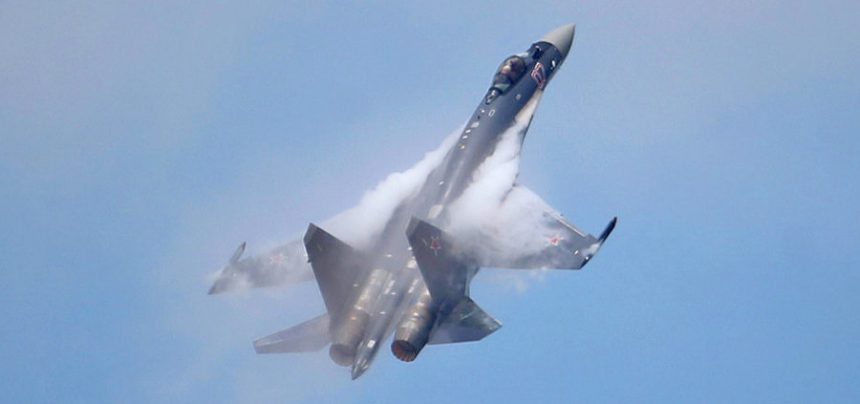Following New F-35 Display at Paris, Moscow Wows with Sukhoi Su-35 Super-Maneuverability Display: But Does it Matter?
Video of Sukhoi’s Su-35 super-maneuverable aircraft flying an impressive new demonstration routine at the MAKS airshow in Russia this week has gone viral on social media.
This year’s updated Russian Sukhoi aerobatic demonstration, similar to previous Sukhoi and MiG demos, follows the first-ever aerobatic display of the American F-35A Lightning II at the Paris Air Show a month ago.
The Su-35S “Flanker E” is the 4++ generation variant of the Su-27 Flanker aircraft.
The multirole aircraft features thrust-vectoring, radar-absorbent paint, Irbis-E passive electronically scanned array radar, IRST (Infra-Red Search and Track) and the said ability to detect stealth planes like the F-35 at a distance of over 90 kilometers (…), the Khibiny radar jamming system along with the ability to use some interesting weapons, including the ultra-long range R-37M air-to-air missile that could target HVAA (High Value Air Assets) such as AWACS and tanker aircraft.
The aircraft were deployed to Hmeymim airbase, near Latakia, in February 2016 to undertake air superiority and escort missions over Syria.
Aviation analysts have long contended that displays of so-called “super maneuverability” at low speeds have little or no tactical value in the real world air combat environment. These displays do often lead to conversations comparing aircraft capabilities and re-open the never-ending debates about which aircraft design doctrine provides a real world tactical advantage.
Are such low speed maneuvers worthless to fight against the U.S. 5th Gen. stealth aircraft that would engage the Su-35S from BVR (Beyond Visual Range) exploiting their radar-evading capabilities?
Real world tactical merit aside, Sukhoi’s display is sensational. The aircraft seems to depart the conventional control regime as it flips, twists and tumbles. The Su-35’s most remarkable sequence is a low speed “Pugachev’s Cobra” transitioning to a tumbling back flip followed by a side-slip to an inverted spin and then a classic recovery gained by pointing the aircraft’s nose to the ground to regain lost energy in exchange for altitude. The entire sequence is flown at altitude that presumably lives little margin for error, making it even more thrilling.
The massive International Aviation and Space Salon MAKS Airshow is happening now at Zhukovsky International Airport outside Moscow, Russia. The show, that runs from July 18-23rd, is one of the most important international airshows in the world. Some estimates suggest 40,000 more aviation enthusiasts and business people attend MAKS than the famous Paris Air Show that took place in June.
“In 2015, MAKS welcomed 404,000 visitors – 52,000 more than attended the Paris Air Show held at Le Bourget in the same year.” According to Russian Aviation Insider.
The MAKS Airshow continues through this weekend. We will report on highlights from the show after it concludes next week.
Top image: The SU-35 wowed MAKS audiences with a new demonstration routine outside Moscow. (Photo: RT)









